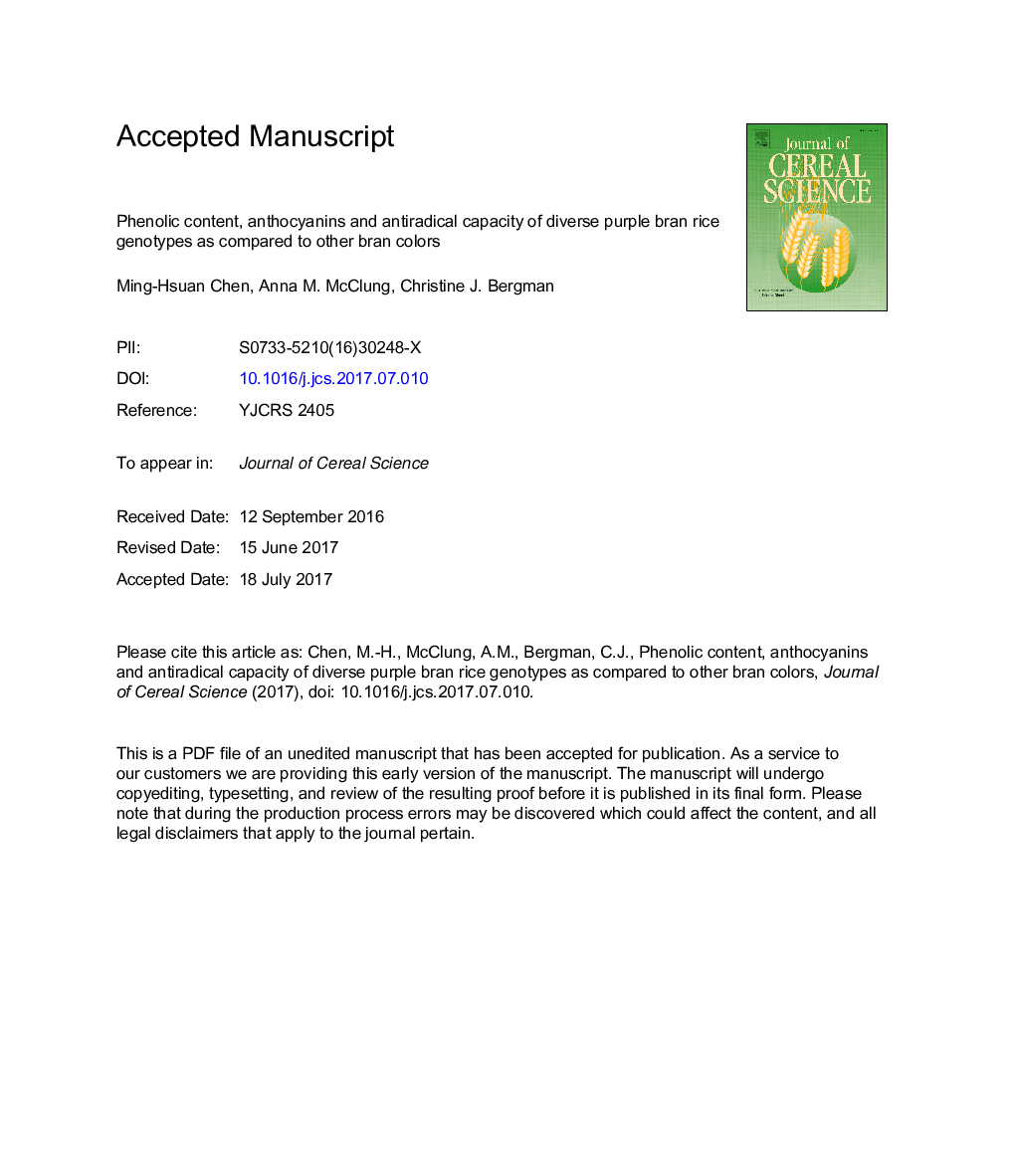| Article ID | Journal | Published Year | Pages | File Type |
|---|---|---|---|---|
| 5762409 | Journal of Cereal Science | 2017 | 35 Pages |
Abstract
Anthocyanins are flavonoids, a subgroup of phenolic compounds in bran of purple rice that have shown health benefits in animal studies and human clinical trials. We studied the genetic diversity of the concentrations of total phenolics, flavonoids and anthocyanins, and, antiradical capacity in diverse purple rice brans. More than 13-, 12-, 25- and 8-fold variations were found for these respective traits. Cyanidin-3-glucoside and peonidin-3-glucoside were the major anthocyanins identified. The color parameter b* of whole grain rice was correlated with anthocyanins and can be used as a non-destructive quick screening tool. Purple brans that accumulated both anthocyanins and proanthocyanidins had the highest total phenolics, total flavonoids, and oxygen radical absorbance capacity among all color brans. Purple brans had the widest genotypic diversity of these chemical traits, followed by red, brown, light brown, and white. In terms of antioxidant properties of total flavonoid compounds in the sample extracts, purple and red brans had similar reducing capacity per unit of total flavonoids; while purple bran had higher oxygen radical absorbance capacity per unit of total flavonoids. In conclusion, new rice cultivars with colored bran having specific amounts and types of phenolic compounds can be developed using traditional breeding.
Related Topics
Life Sciences
Agricultural and Biological Sciences
Agronomy and Crop Science
Authors
Ming-Hsuan Chen, Anna M. McClung, Christine J. Bergman,
